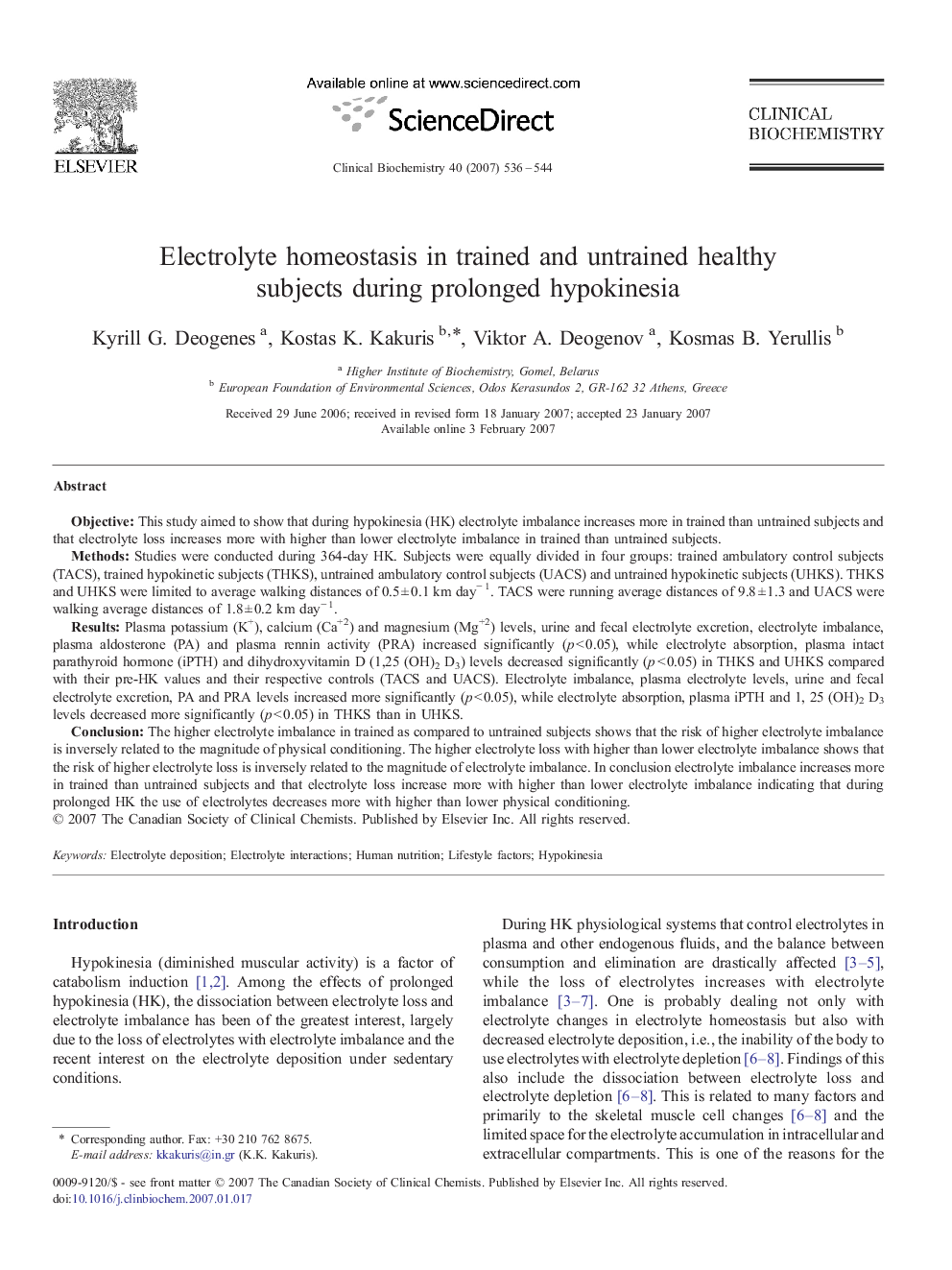| کد مقاله | کد نشریه | سال انتشار | مقاله انگلیسی | نسخه تمام متن |
|---|---|---|---|---|
| 1970164 | 1059795 | 2007 | 9 صفحه PDF | دانلود رایگان |

Objective:This study aimed to show that during hypokinesia (HK) electrolyte imbalance increases more in trained than untrained subjects and that electrolyte loss increases more with higher than lower electrolyte imbalance in trained than untrained subjects.Methods:Studies were conducted during 364-day HK. Subjects were equally divided in four groups: trained ambulatory control subjects (TACS), trained hypokinetic subjects (THKS), untrained ambulatory control subjects (UACS) and untrained hypokinetic subjects (UHKS). THKS and UHKS were limited to average walking distances of 0.5 ± 0.1 km day− 1. TACS were running average distances of 9.8 ± 1.3 and UACS were walking average distances of 1.8 ± 0.2 km day− 1.Results:Plasma potassium (K+), calcium (Ca+2) and magnesium (Mg+2) levels, urine and fecal electrolyte excretion, electrolyte imbalance, plasma aldosterone (PA) and plasma rennin activity (PRA) increased significantly (p < 0.05), while electrolyte absorption, plasma intact parathyroid hormone (iPTH) and dihydroxyvitamin D (1,25 (OH)2 D3) levels decreased significantly (p < 0.05) in THKS and UHKS compared with their pre-HK values and their respective controls (TACS and UACS). Electrolyte imbalance, plasma electrolyte levels, urine and fecal electrolyte excretion, PA and PRA levels increased more significantly (p < 0.05), while electrolyte absorption, plasma iPTH and 1, 25 (OH)2 D3 levels decreased more significantly (p < 0.05) in THKS than in UHKS.Conclusion:The higher electrolyte imbalance in trained as compared to untrained subjects shows that the risk of higher electrolyte imbalance is inversely related to the magnitude of physical conditioning. The higher electrolyte loss with higher than lower electrolyte imbalance shows that the risk of higher electrolyte loss is inversely related to the magnitude of electrolyte imbalance. In conclusion electrolyte imbalance increases more in trained than untrained subjects and that electrolyte loss increase more with higher than lower electrolyte imbalance indicating that during prolonged HK the use of electrolytes decreases more with higher than lower physical conditioning.
Journal: Clinical Biochemistry - Volume 40, Issue 8, May 2007, Pages 536–544